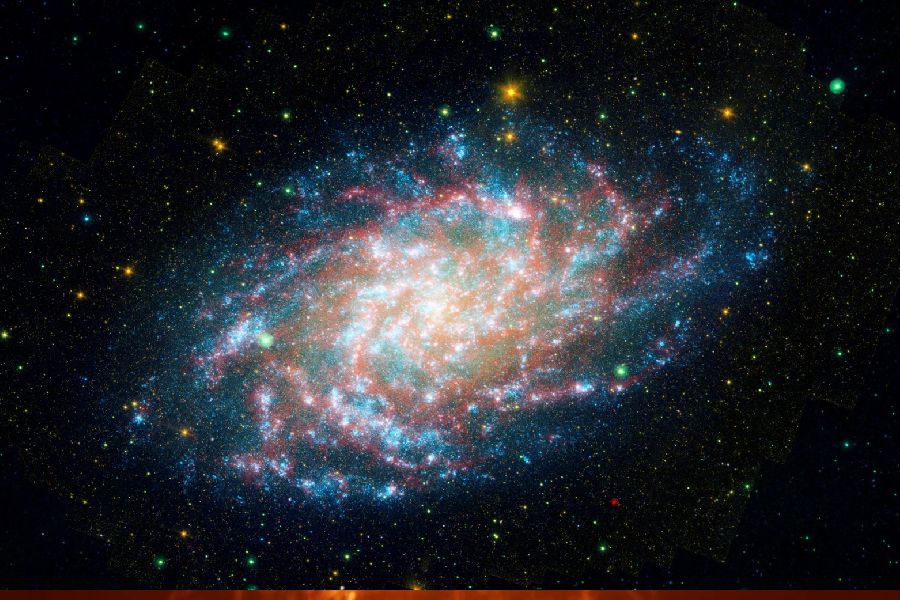Ever wondered about our cosmic neighborhood? Beyond the familiar stars and constellations, vast galaxies hold secrets about the universe’s structure and evolution. One such intriguing neighbor is the Triangulum Galaxy.
While its existence has been known for centuries, its precise location in the vast expanse of space remains a topic of ongoing exploration.
This article delves into the fascinating journey of pinpointing the Triangulum Galaxy location. We’ll explore how astronomers navigate the night sky to find this distant spiral galaxy and the sophisticated techniques employed to measure the staggering distances separating us from these celestial wonders.
By uncovering the Triangulum Galaxy location, we gain a deeper understanding of our place within the grand tapestry of the universe.

Triangulum Galaxy Location
The Triangulum Galaxy, also known as Messier 33 (M33) or NGC 598, resides within the constellation Triangulum, easily recognizable by its triangular shape. Located in the northern celestial hemisphere, Triangulum sits between the constellations Andromeda and Perseus.
Although visible with the naked eye under exceptionally clear and dark skies, the Triangulum Galaxy appears faint and requires a bit of stargazing finesse to locate.
Tips for amateur astronomists
- Seek dark skies – Light pollution from urban areas significantly hinders visibility. Choose a location far from city lights for optimal viewing.
- Choose the right time – The Triangulum Galaxy is best observed during the fall and winter months in the northern hemisphere when it reaches its highest point in the night sky.
- Use binoculars or a telescope – While a glimpse might be possible with the naked eye under perfect conditions, binoculars or a small telescope significantly enhance your chances of spotting the faint glow of the Triangulum Galaxy.
- Starhop your way – Locate prominent constellations like Andromeda and Perseus first. The Triangulum Galaxy lies approximately halfway between these two constellations, slightly closer to Andromeda.
Distance to the Triangulum Galaxy
Measuring the vast distances across the universe poses a significant challenge. However, astronomers employ various techniques to estimate the distance to galaxies like the Triangulum Galaxy.
Early attempts to measure galactic distances relied on techniques like stellar parallax. However, these methods proved inadequate due to the immense distance to the Triangulum Galaxy.
Modern techniques and recent measurements
- Standard candles – These are celestial objects with known intrinsic luminosities. By comparing a galaxy’s apparent brightness with its known intrinsic brightness, scientists can estimate its distance.
- Cepheid variables – These pulsating stars exhibit a relationship between their pulsation period and intrinsic luminosity. By measuring the period of Cepheid variables within a galaxy, astronomers can estimate its distance.
Recent measurements using these techniques place the Triangulum Galaxy at a distance of approximately 2.73 million light-years from Earth. This translates to the light reaching us from the Triangulum Galaxy having traveled for an astonishing 2.73 million years!
Conclusion
The Triangulum Galaxy, residing within the constellation Triangulum, stands as a captivating celestial neighbor. By utilizing tools like binoculars or telescopes under dark skies, amateur astronomers can attempt to locate this distant marvel in the night sky.
Modern astronomical techniques, employing methods like standard candles and Cepheid variables, have revealed the Triangulum Galaxy location to be approximately 2.73 million light-years away.
This remarkable distance underscores the vastness of the universe and the ongoing quest to understand and explore its hidden wonders. As our technology and understanding continue to evolve, the Triangulum Galaxy promises to offer further insights into the formation, evolution, and nature of galaxies within our cosmic neighborhood.
